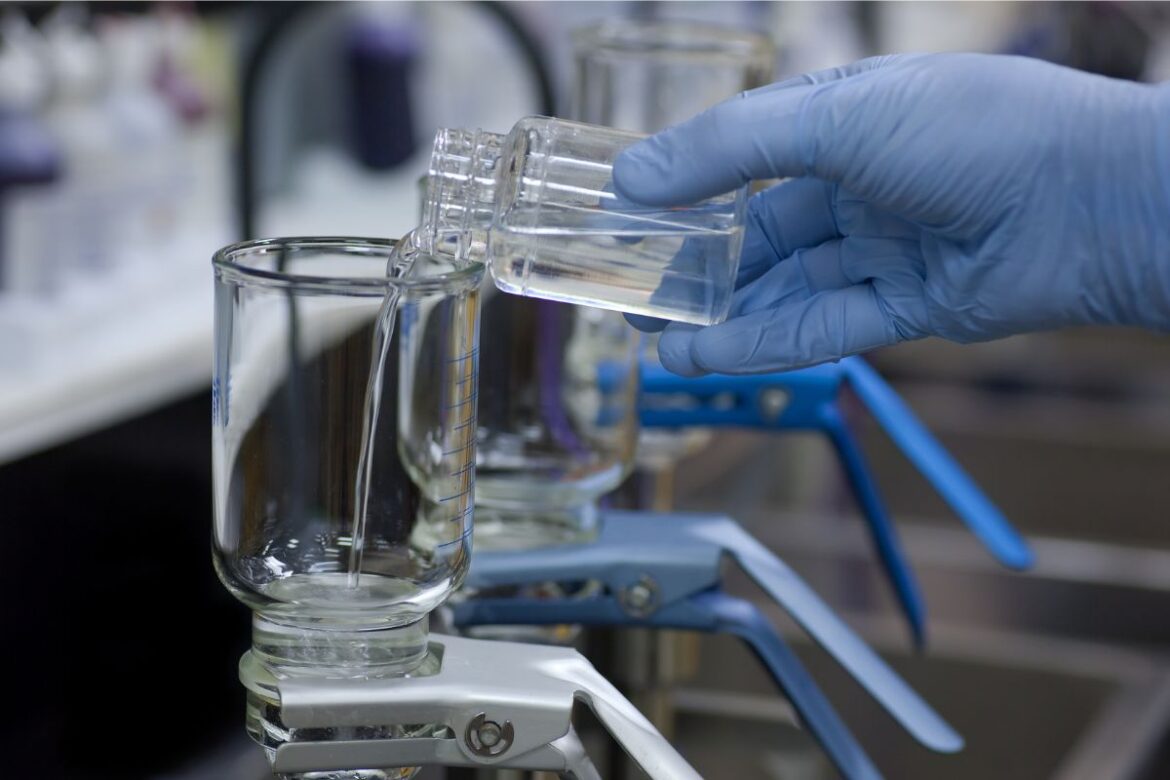
The Role of Water Testing in Workplace Safety
Ensuring Clean and Safe Water Sources.
Water is a fundamental resource in any workplace, vital for both drinking and sanitation purposes. Everyone deserves access to clean water. Despite this, poor water quality is often a fact that poses damaging health risks. Only with proper and prioritized water testing can we be assured of our safety and enjoy the benefits of clean, uncontaminated water.
The World Health Organization (WHO) reports that 1 out of every 3 people in the world lacks access to safe drinking water. Sadly, most of this group live in Africa. The need for vigilance is striking. Identifying potential risks and problems and acting quickly can significantly reduce waterborne disease and consequences such as diarrhoea.
Ensuring that water sources are clean and safe is crucial for maintaining workplace safety and health. Regular workplace water quality testing plays a pivotal role in achieving this goal.
Importance of Water Testing
- Health Protection: Contaminated water can harbor harmful bacteria, viruses, and chemical pollutants that pose significant health risks to employees. Regular water testing helps identify these contaminants early, preventing potential outbreaks of waterborne diseases.
- Compliance with Regulations: Many industries are subject to strict water quality standards and regulations. Regular water testing ensures that a workplace complies with local, state, and federal guidelines, thereby avoiding legal repercussions and fines.
- Maintenance of Equipment: Impurities in water can lead to the corrosion of pipes, boilers, and other equipment. Testing water regularly helps detect such issues, ensuring the longevity and proper functioning of workplace infrastructure.
- Employee Confidence and Morale: Providing access to clean and safe water contributes to the overall well-being of employees. It enhances their confidence in the workplace environment, thereby boosting morale and productivity.
Key Components of Water Testing
Microbiological Testing: This involves checking for the presence of harmful microorganisms such as E. coli, Legionella, and other pathogens.
Read: Understanding Legionella: Risks, Prevention, and Water Safety Measures
Presence of harmful microorganisms such as bacteria (e.g., E. coli, Legionella), viruses, and protozoa can cause serious health issues like gastrointestinal infections Legionnaires’ disease, and other waterborne illnesses.
Sources are a contaminated water supply, stagnant water in a cooling tower, and poorly maintained plumbing systems.
Chemical Testing: Tests are conducted to detect harmful chemicals, including lead, arsenic, nitrates, and other industrial pollutants.
Exposure to toxic chemicals such as lead, arsenic, nitrates, and industrial pollutants can lead to long-term health effects, including neurological damage, cancer, and reproductive issues.
Sources are industrial discharges, corrosion of pipes, use of chemical additives, and accidental spills or leaks.
Pesticides and fertilizers from agricultural runoff can lead to contamination of water sources, causing health issues like hormonal disruptions and developmental problems.
Physical Testing: This assesses the physical characteristics of water, such as colour, odour, and turbidity, which can indicate contamination.
Physical contaminants like sediment, rust, and debris can affect the taste, odour, and appearance of water, making it unfit for consumption and potentially damaging equipment.
Sources can be aging infrastructure, construction activities, and inadequate filtration systems.
Periodic and On-Demand Testing: Regularly scheduled tests help in early detection of potential issues. Additionally, on-demand testing can be performed after any suspected contamination event.
Implementing a Water Testing Program
- Assessment of Water Sources: Identify all water sources within the workplace, including drinking fountains, restrooms, kitchens, and any industrial water usage points.
- Establishing Testing Frequency: Determine how often water should be tested based on usage, local regulations, and industry standards.
- Hiring Certified Professionals: Engage certified water testing professionals to carry out accurate and reliable testing.
- Documenting and Reviewing Results: Keep detailed records of all water testing results and review them regularly to identify trends and address issues promptly.
- Implementing Corrective Actions: If contaminants are detected, take immediate corrective actions such as cleaning, repairing, or upgrading water systems to ensure safety.
Some industries rely more heavily on water systems for various operational, production or processing needs, for example:
Food and Beverage Industry
- Uses: Cleaning, cooking, mixing, and bottling processes.
- Examples: Breweries, soft drink manufacturers, dairy processing plants, and food processing factories.
Pharmaceutical Industry
- Uses: Preparation of drugs, cleaning of equipment, and as a solvent in formulations.
- Examples: Pharmaceutical manufacturing plants, biotechnology companies.
Risks involve residues of pharmaceuticals and personal care products in water that can disrupt ecosystems and pose health risks to humans, such as antibiotic resistance. They can result from the improper disposal of medications, industrial discharges, and wastewater treatment plants.
Chemical Industry
- Uses: Cooling systems, as a solvent in chemical reactions, and for product dilution.
- Examples: Petrochemical plants, fertilizer production, and chemical manufacturing facilities.
Power Generation Industry
- Uses: Cooling systems in thermal and nuclear power plants, hydroelectric power generation.
- Examples: Coal-fired power plants, nuclear power stations, hydroelectric dams.
Textile Industry
- Uses: Dyeing, bleaching, printing, and washing fabrics.
- Examples: Textile mills, garment manufacturing units.
Oil and Gas Industry
- Uses: Drilling operations, refining processes, and cooling systems.
- Examples: Oil refineries, natural gas processing plants.
Paper and Pulp Industry
- Uses: Pulping, bleaching, and paper manufacturing processes.
- Examples: Paper mills, cardboard manufacturing facilities.
Mining Industry
- Uses: Mineral processing, dust suppression, and cooling machinery.
- Examples: Metal mining operations, coal mining, and quarrying.
Agriculture Industry
- Uses: Irrigation, livestock watering, and cleaning equipment.
- Examples: Farms, horticulture operations, aquaculture farms.
Automotive Industry
- Uses: Painting, cooling, and washing components.
- Examples: Car manufacturing plants, automotive parts factories.
Cross-Contamination from Sewage and sewage contamination from any industry or source can introduce pathogens, nitrates, and harmful chemicals into the water supply, leading to a severe health risk such as cholera, dysentery, and hepatitis. Causes can be leaking or broken sewer lines, backflow from sewage systems, and inadequate wastewater treatment.
Water testing is an essential aspect of workplace safety, ensuring that all water sources are clean and safe for use. By implementing a robust water testing program, employers can protect the health of their employees, comply with regulations, and maintain the integrity of their infrastructure. Regular testing not only safeguards the workplace but also promotes a culture of health and safety, leading to a more productive and satisfied workforce.
Apex Environmental will collect and analyse water samples from various points in your business and production to ensure compliance to the relevant legal requirements. Find out more.






